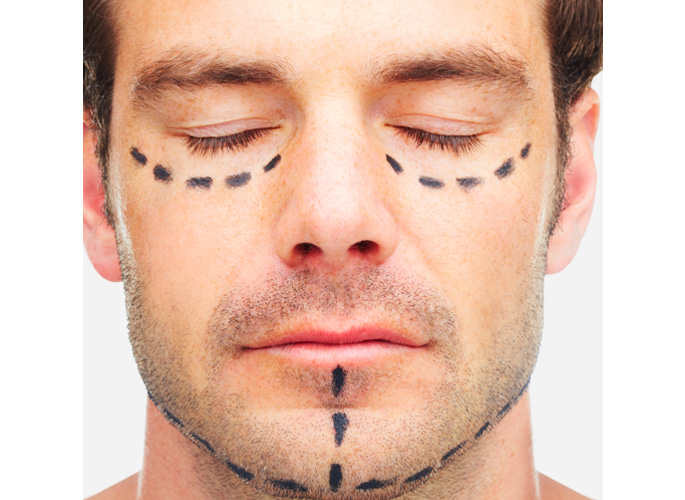Revision Ptosis Surgery
What is Revision Ptosis Surgery?
In patients who have had prior ptosis surgery, they may not be happy with the result due to an upper lid position that is too high, too low, or asymmetric between the two eyes. The eyes may look too big, too small, or lopsided. Or, patients may have difficulty closing their eyes or have problems with dry eyes after surgery. Many patients come to us who are not satisfied with their previous surgeon’s work seeking further improvement or correction.
Revision Ptosis surgery aims to adjust the lid position and contour of the upper eyelid after prior ptosis surgery. It is more challenging due to the presence of scar tissue and altered anatomy from the prior surgery. The goal is to set the upper lids at the ideal height with as much symmetry as possible. In some cases, it may not be possible to fix everything perfectly due to what was done in the original surgery. As a trained oculofacial plastic surgeon, Dr. Lee will carefully examine you, review your original surgeon’s operative report, and talk to you about how things can be improved.
How Does the Procedure Work?
Revision ptosis surgery starts with an in-depth consultation. Dr. Lee will want to review your pre-operative photos and the clinic notes and operative report from your prior surgeon. He will evaluate your anatomy, understand what bothers you, and then discuss a plan to help you reach your goals.
The surgical process will be similar to any other type of eyelid surgery. That means you will need either local anesthesia or IV sedation and can have the surgery in clinic or in a surgery center. The time required is case-dependent and can vary significantly depending on the extent and complexity of the revisions to be made. After your surgery, you can return home the same day as long as someone else drives you. From there, you can start resting and recovering.
How Does Dr. Lee Customize Revision Ptosis Surgery for His Patients?
No two revision surgeries are alike. Instead, we build each plan around what you had previously hoped your surgery would achieve. Dr. Lee will perform a complete evaluation to examine your eyelids and eyes. He will check for dry eyes and the integrity of your cornea. He will discuss how to adjust the eyelid based on your individual preferences, what is safe for your vision, and what would look natural for you.
Some patients are interested in combining ptosis surgery with other procedures that will further improve peripheral vision or provide cosmetic improvement. Common procedures performed in combination with revision ptosis surgery include upper blepharoplasty, lower blepharoplasty, and brow lift.

Testimonials




Why do patients prefer an oculofacial plastic surgeon for Revision Ptosis Surgery?
When dealing with the complex anatomy of the eye area, you absolutely want a specialist. An oculofacial plastic surgeon has the most advanced training and experience with complex eyelid surgery to deliver the results that you want. Many patients who come for revision surgery had their original eyelid procedure with a regular plastic surgeon, facial plastic surgeon (ENT), ophthalmologist, or other specialist who does a limit range of eyelid surgeries such as upper or lower blepharoplasty. However, if there are problems or unexpected complications, they may not be trained to handle the revision surgery and will refer you to an oculofacial plastic surgeon. By choosing an oculofacial surgeon, you give yourself the best odds for having a successful procedure, whether it is for first-time or revision eyelid surgery.
Does insurance cover Revision Ptosis Surgery?
Insurances will sometimes cover revision ptosis surgery on visual grounds if the upper eyelid rests within 2 mm of the pupil in spite of the prior surgery. Insurance companies require photos, eyelid measurements, and visual field testing to see how much the eyelids are impairing vision. If the revision ptosis surgery is being performed because of asymmetry or an unfavorable cosmetic outcome but does not meet insurance criteria, it cannot be covered by insurance.
What is the “down time” after Revision Ptosis Surgery?
Your downtime and recovery will be similar to your first surgery. Even if we only make minor revisions, patients should plan for some bruising and swelling for the first couple weeks. You should avoid strenuous activity for the first 2 weeks. Our goal is for you to have as comfortable an experience as possible every step of the way. We will also provide you with complete information on how to ensure a smooth recovery and optimal results.
Once you have fully healed, your final results should become apparent at 2-3 months after the procedure.
Schedule Your Consultation Today
If you are unhappy with your original ptosis surgery result, it is time to set things right. Schedule your consultation today to get started with Dr. Lee in achieving your goals. When you come in for your consultation, we will fully listen to what you want changed or fixed. No matter what happened with your original surgery, we are here to help you get the results you always wanted.


